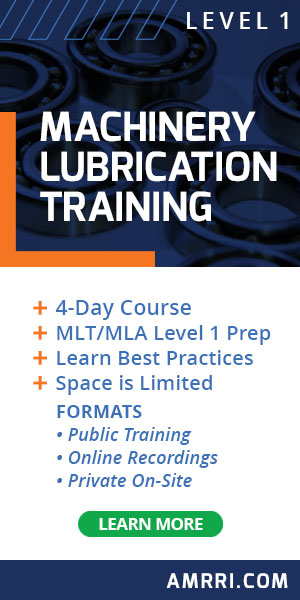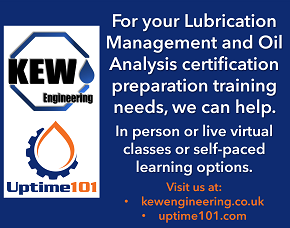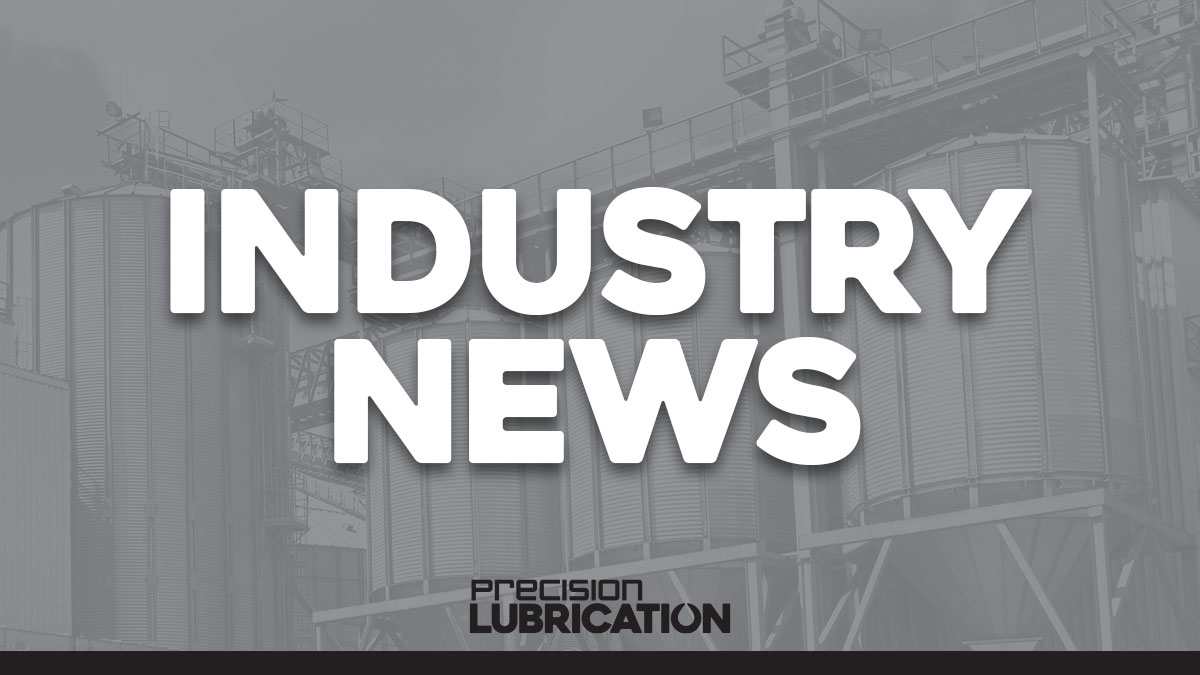Companies enhance workforce efficiency and performance through various strategies. The most significant labor group is the production sector. Managers, where possible, have integrated operators into systematic, structured, and occasionally complex pre-shift equipment inspections to assess if the machinery is primed for production. This practice is prevalent in specific production settings due to the unique interaction between the operator and the equipment.
The production of additional components is particularly suited to this method. This includes using machines for tire assembly before curing, gear machining, or metal frame stamping for incorporation into parts for completed products.
Industries with continuous processes, such as oil refining, cement and paper production, and chemical manufacturing, operate non-stop, ideally without a definite beginning and end point throughout a shift, day, or month. These manufacturing procedures have had limited success with operator-centric maintenance.
As leadership continues to seek methods to boost productivity, there will likely be an increased focus on operator-centric maintenance and lubrication tasks. Here are a few reasons why it’s beneficial to involve operators in machine maintenance:
- Economic constraints compel manufacturers to operate with extreme efficiency.
- The retirement of skilled workers (the boomer generation began retiring in 2012).
- More experienced, driven, and skilled labor is needed to replace the retiring workforce.
- Logical distribution of work.
Operator-Based Care
In both piece and continuous production processes, it’s crucial to thoroughly consider operator-based maintenance, including fundamental tasks such as machine lubrication checks. This concept isn’t novel. As a supplier service technician in the mid-1980s, I noticed several clients attempting to implement operator-based lubrication maintenance.
However, in most cases, the program was rushed into operation, leading to operators needing help with oil cans and grease guns, declining machine reliability, and, ultimately, abandoning the initiative.
In several instances, I queried department managers about why the program failed at their site. A common thread among these organizations was the need for clearly defined responsibilities and accountability. The expectations were vague, resulting in weak accountability.
This issue persists in the present day. Without clear definition and accountability, the quality of lubrication practices depends on the operators’ understanding of machine requirements and their good intentions. If the workers are motivated and skilled, reliable results can be expected. However, if this is not the case, the outcomes will likely be subpar.
The following are critical factors for the success of operator-based maintenance:
- Clearly defined program expectations
- Clearly defined tasks suitable for operators
- A simple, reliable, automated scheduling plan
- A solid commitment to maintaining accountability for task completion
While operators can and should complete specific tasks, they should not be responsible for all aspects of machine lubrication.
This article delves into the potential of operator-based lubrication practices.
Protect the Gap
The thickness of the oil film for element bearings and components with rolling interaction typically varies from half to one and a half millionths of a meter. The oil film is slightly thicker for journal bearings and components with sliding interaction, ranging from three to ten-millionths of a meter.
These films are susceptible to various disturbances, known as failure modes. Experts in engineering and tribology have identified numerous failure modes that recur persistently. The primary culprits include:
- Contaminated reservoirs (dust, water, machine wear debris, air, heat, other lubricants).
- The use of inappropriate lubricant (wrong viscosity or additive type).
- Incorrect reservoir volume (excessive in greased bearings, insufficient in oil reservoirs).
These factors pose significant risks to operational machine reservoirs and should ideally be eliminated. This raises a question about our continuous operational requirements:
Have we inadvertently incorporated failure into our procedures? Suppose maintenance and engineering managers are conscious of the recurring threats to the microscopic film, understand how routine activities can generate these threats, and agree that removing these defects is best. Why haven’t procedures been developed to prevent these threats?
Here are some essential but crucial daily requirements for successful operator participation in lubrication practices:
- Ensure the machine reservoir has the necessary amount of oil or grease.
- Confirm the correct product type for the application.
- Prevent contamination.
- Monitor and report any abnormalities.
These requirements are straightforward, simple, and easily recordable. In theory, vital components can endure for decades instead of just months or years if these conditions are met. However, the damaging consequences of not meeting these requirements are well established.
Establishing a reliability-focused and operator-driven lubrication practice isn’t complex, but it is meticulous.
Program design should manage as many details as possible with minimal human intervention. This involves:
- Intentional planning.
- Clear definition of machine care and program practice goals.
- Providing operators with the necessary training and tools.
- Utilizing available technological (hardware, software) tools for implementation and management.
- Management support is shown by consistently holding workers accountable.
- Choosing high-quality brands and securing local supplier service support.
Define the Program
The following features can identify an effective lubrication strategy based on operator involvement:
Well-articulated program aims and objectives, along with a system for accountability.
These aims should be in harmony with existing reliability enhancement targets, and the objectives should further these aims. Potential aims could encompass:
- Enhancing machine uptime and output via improved machine dependability.
- Decreasing direct expenses linked to maintenance labor.
- Lowering direct costs related to machine part replacement.
- Establishing lubrication methods that align with plant reliability goals.
Starting a program without total commitment is not advisable. Without complete acceptance and dedication from production management to the short- and long-term needs, the operator-based maintenance initiative will likely fail due to neglect.
A clear-cut accountability plan to back the aims is recommended. Production and shift operator management should be entirely committed to ensuring operator adherence, irrespective of any resistance.
Well-defined machine care and program practice goals.
These goals should focus on the tasks and specifics of the overarching program and specific machine needs. High-level program management goals could include:
- Optimizing lubrication tasks and frequencies based on machine dependability requirements (derived from standardized engineering practices).
- Achieving 100% first-time completion of all scheduled run-time activities.
- Limiting repeat notices for corrective action requests to a maximum of 10%.
- Conducting training and testing-based verification every six months.
- Implementing fully automated record management.
Once the strategic direction is provided (as suggested by the objectives), the reliability engineer and development team can devise the tactical steps required to realize the plan.
The tactical requirements supporting these include:
Optimization of lubrication tasks and frequencies should be tailored to the specific reliability needs of each machine.
- Establish or create a hierarchy based on the significance of each machine.
- A matrix encompassing lubrication, inspection, and condition-control needs and frequencies should be built, grounded on the criticality evaluation. This matrix should ensure that every machine is covered according to its level of importance.
- Standard operating procedures (SOPs) for each task type should be formulated based on the criticality evaluation and the matrix of necessary activities. These SOPs should be integrated into the required frequencies. The expectations for each machine should be clearly defined, leaving no room for uncertainty.
- All tasks and frequencies should be assembled and planned using a route-based program.
The goal is to achieve a 100% initial completion rate for all scheduled activities.
- Each route should be designed to have a manageable workload, ensuring that it can be completed each time it is scheduled.
- The production management team should emphasize the importance of promptly completing the route after it has been assigned.
The aim is to limit the repetition of corrective action request notices to a maximum of 10%.
- Operators should inform management about any changes in the operational state of the machine.
- These notices should be evaluated by the planning team and either scheduled for action or rejected with a valid reason.
- The inspection process should be carried out promptly.
The objective is to achieve a 100% success rate in training and testing-based verification every six months.
- Operators should receive training that matches their expected level of responsibility.
- The training should be specific to each task, covering all aspects of the tasks to be performed.
- Initial training should be completed before tasks are assigned, which should be repeated every six months.
- Wherever possible, training should be hands-on.
Providing operators with the necessary training and resources for their duties.
The essential tools needed are straightforward and cost-effective:
- Containers for oil handling that can be cleaned and sealed.
- Grease guns that come with volume meters.
- Devices for transferring/loading oil from one container to another.
- Transparent labeling for each machine indicating the needed lubricant.
- Containers for waste oil disposal (if oil changes are incorporated into the task list).
Utilizing the existing technological (hardware, software) resources for execution and administration.
Operators should not be burdened with unnecessary, lengthy manual documentation processes to prove the completion of the scheduled tasks. A fully automated record management system can be chosen from trustworthy suppliers, including quality evaluation modules on some existing CMMS packages.
The record management system should offer:
- Efficient handling of a large number of recurring tasks.
- Sequential task organization (lists, routes) displaying all necessary tasks, schedules, and procedures.
- Capability to attach supplementary documents (photos, sketches, diagrams, etc.) for a comprehensive depiction of each task would be beneficial.
- A method for operator feedback about each task, including the ability for:
-
- Indicating completion by time, date, and operator.
- Indicating reasons for non-completion.
- Indicating capture and reuse of operator observations.
- Indicating operator-suggested maintenance activities.
- Monitoring each task against required completion intervals.
- Tracking each suggested maintenance activity for completion.
Management should anticipate at least three years of focus from a committed technical resource to guarantee a complete culture shift. It should not tolerate hastily written notes from vaguely defined routes.
The importance of managerial support is underscored by the need to enforce employee responsibility consistently.
The absence of leadership and implementation can hinder the alteration of human behaviors. The most significant threat to the enduring success of this responsibility transition, and ultimately to the long-term enhancement of plant productivity and machine dependability, lies in the shift management’s role in reinforcing the discipline to accomplish all planned tasks.
Shift operators will develop a sense of ownership towards the program that reflects the attitudes of middle and senior management. If top management does not show an active interest in the daily and weekly fulfillment of tasks and ensure they are done according to the established quality plan, the tasks may eventually be neglected.
There have been cases where programs are ceremonially initiated by plant or senior production management actually taking up the task of cleaning, inspecting, and lubricating machines (i.e., leading by example). It can be advantageous if this ceremonial approach aligns with the plant culture. However, if it doesn’t, it could be detrimental.
Choosing a quality brand and local supplier service support.
The choice of a lubricant vendor is equally vital for an operator-based plan as it would be for a mechanic or lubrication technician-based plan. Ensuring a clean, dry, and chemically correct lubricant supply is crucial and is probably the easiest part of the plan to execute.
It’s a frequent mistake to gauge the success of a plant lubrication program based on the reputation of the brand or supplier’s quality rather than the actual outcomes of the program.
While vendor and product quality are undoubtedly important, even the highest quality products won’t yield satisfactory results if they are mishandled during application.
The focus on operation-based machine care, particularly lubrication care, has been a topic of interest for senior management for many years. Yet, it is not commonly implemented in continuous process plants. A well-thought-out plan and a steadfast commitment to consistently carry out scheduled practices can deliver the expected quality.
A well-devised plan will inherently be reliability-centered and machine-specific, including clear, achievable, measurable goals and objectives. The plan starts with a detailed task development machine review, an assessment of material resources required for the tasks in the plan, and a suitable time allocation for completion.
A planning and tracking system is built around the tasks to facilitate regular tracking of multiple instances of multiple tasks/events with minimal reliance on manual record keeping.
Operator training is designed around machine-specific tasks, routes, and tools for delivery. Besides the evident support from management’s resource allocation to the development of the practices, management should visibly and vocally demonstrate their support by holding employees accountable for completing their work.









